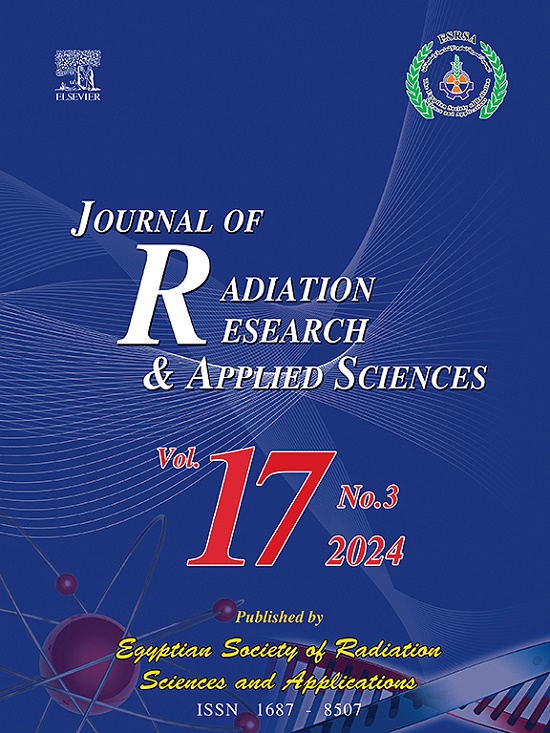5G异构网络中的动态切换优化
IF 1.7
4区 综合性期刊
Q2 MULTIDISCIPLINARY SCIENCES
Journal of Radiation Research and Applied Sciences
Pub Date : 2025-03-12
DOI:10.1016/j.jrras.2025.101411
引用次数: 0
摘要
随着5G和物联网设备的快速普及,无缝移动和无处不在的连接变得至关重要。5G网络具有异构特性,集成了宏蜂窝、小蜂窝和Wi-Fi热点等多种网络环境,这对保持移动用户的不间断连接构成了重大挑战。有效的交接机制对于确保这些不同网络之间的平稳过渡和保证最佳的服务质量至关重要。现有的静态切换技术往往难以适应异构网络的动态条件,导致性能次优和连接中断。这种研究差距需要开发更智能和自适应的切换解决方案。为优化异构5G无线网络的无缝连接,提出了一种新的动态切换方法。该方法利用实时5G网络分析,分析用户移动模式,并结合QoS要求来做出智能切换决策。因此,需要根据当前网络条件和用户环境动态调整切换参数,该方法旨在最小化延迟,减少丢包,最终提高整体用户体验。在异构移动网络中的无缝移动性中,讨论了基于功率水平、用户速度和目标单元负载等因素的切换性能改进。通过大量的仿真对所提出的动态切换方法的性能进行了评估。结果表明,与传统的静态切换技术相比,该方法在关键性能指标上有了显著改善。具体而言,与表2中现有静态方法的80%成功率相比,所提出的方法在移交成功率方面提高了95%,并大幅减少了停机时间。此外,动态方法可以更好地利用网络资源。此外,还强调了在异构环境中需要移动性管理方案来满足用户的不同需求。这项工作有助于持续开发自适应和弹性连接解决方案,这对5G及以后不断变化的环境至关重要。本文章由计算机程序翻译,如有差异,请以英文原文为准。
Dynamic handover optimization in 5G heterogeneous networks
With the rapid proliferation of 5G and internet of things devices, seamless mobility and ubiquitous connectivity have become paramount. 5G networks, characterized by their heterogeneous nature, integrating diverse network environments like macro cells, small cells, and Wi-Fi hotspots, pose significant challenges to maintaining uninterrupted connectivity for mobile users. Efficient handover mechanisms are crucial for ensuring a smooth transition between these diverse networks and guaranteeing optimal quality of service. Existing static handover techniques often struggle to adapt to the dynamic conditions of heterogeneous networks, leading to suboptimal performance and disruptions in connectivity. This research gap necessitates the development of more intelligent and adaptive handover solutions. This paper proposes a novel dynamic handover approach designed to optimize seamless connectivity in heterogeneous 5G wireless networks. The proposed method leverages real-time 5G network analytics, analyses user mobility patterns, and incorporates QoS requirements to make intelligent handover decisions. Hence, there is need in dynamically adjusting handover parameters based on current network conditions and user contexts, the approach aims to minimize latency, reduce packet loss, and ultimately enhance the overall user experience. In Seamless Mobility in Heterogeneous Mobile Networks, improvements to handover performance based on factors such as power level, user velocity, and target cell load have been discussed. The performance of the proposed dynamic handover approach was evaluated through extensive simulations. The results demonstrate significant improvements in key performance indicators compared to traditional static handover techniques. Specifically, the proposed approach achieves a 95% improvement in handover success rates and a substantial reduction in downtime, compared to the 80% success rate of existing static methods as seen from table 2. Moreover, the dynamic approach leads to better utilization of network resources. Also, there is a highlight on the need for mobility management schemes in heterogeneous environments to address the diverse needs of users. This work contributes to the ongoing development of adaptive and resilient connectivity solutions essential for the evolving landscape of 5G and beyond.
求助全文
通过发布文献求助,成功后即可免费获取论文全文。
去求助
来源期刊

Journal of Radiation Research and Applied Sciences
MULTIDISCIPLINARY SCIENCES-
自引率
5.90%
发文量
130
审稿时长
16 weeks
期刊介绍:
Journal of Radiation Research and Applied Sciences provides a high quality medium for the publication of substantial, original and scientific and technological papers on the development and applications of nuclear, radiation and isotopes in biology, medicine, drugs, biochemistry, microbiology, agriculture, entomology, food technology, chemistry, physics, solid states, engineering, environmental and applied sciences.
 求助内容:
求助内容: 应助结果提醒方式:
应助结果提醒方式:


